|
|
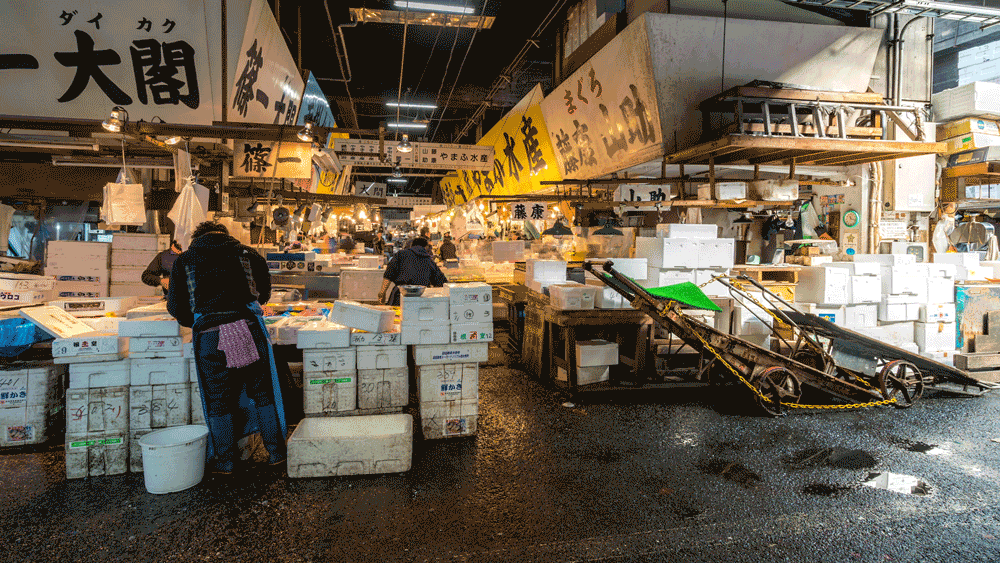
Source: Getty Images
End of an Era for the World's Most Famous Fish Market
Tokyo’s iconic Tsukiji market is leaving the location it’s occupied for more than 80 years.
The end of an era has finally come for the world's oldest, biggest — and arguably most famous — fish market.
On Oct. 6, Japan’s Tsukiji fish market will begin the move from its current spot near the upmarket Tokyo shopping area of Ginza to a location that used to house a gasworks close to Tokyo Bay, a move that’s been under discussion since 2001. The new market is set to open its doors on Oct. 11.
On a typical day, about 1,628 tons (3.6 million pounds) of seafood pass through Tsukiji, with a value of about 1.6 billion yen ($14 million). The bustling inner-city market carries about 480 types of seafood and 270 types of other produce.
As Tokyo’s iconic fish market enters a new chapter, here’s a look back at it through the years.
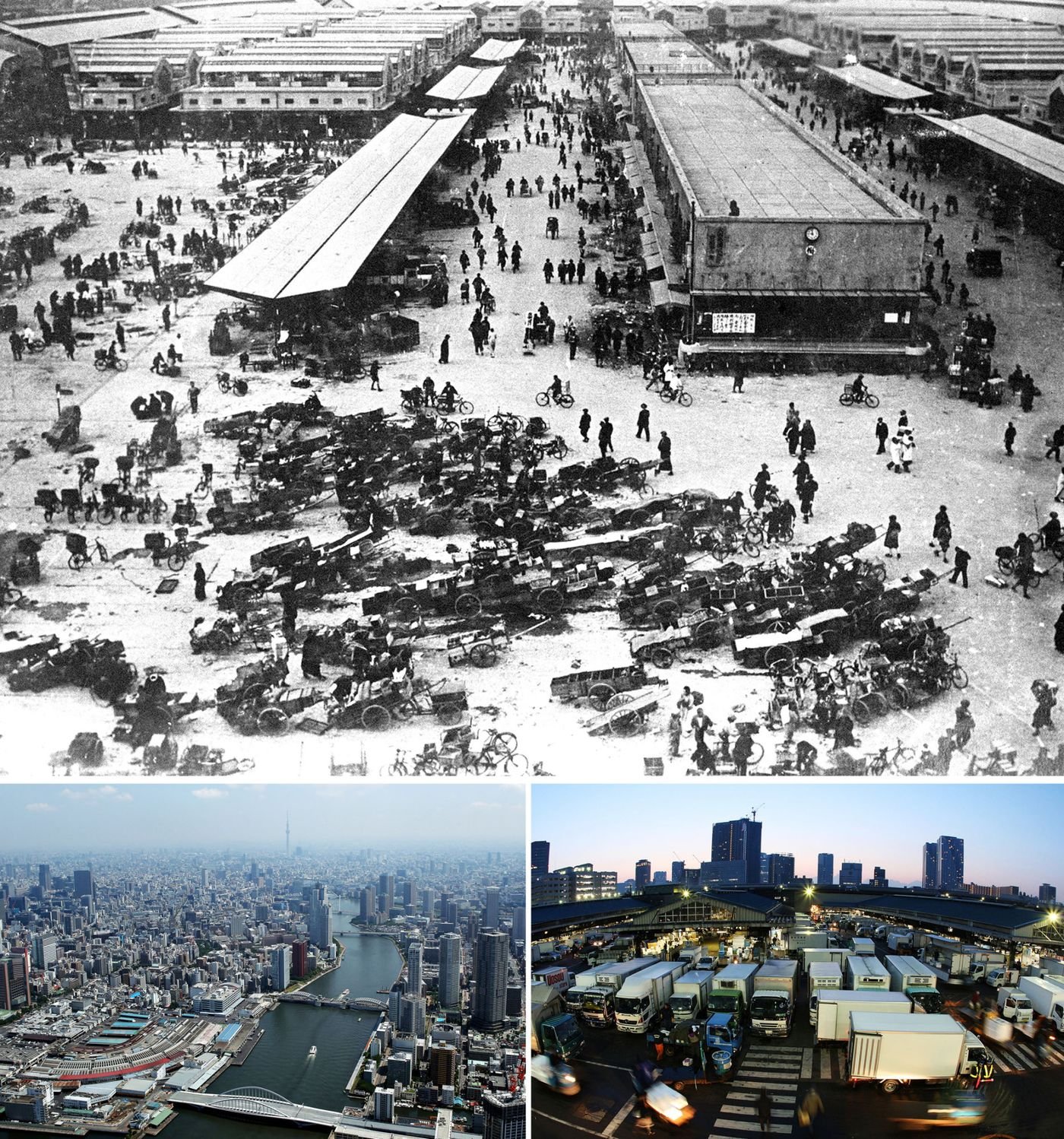
The early years of Tsukiji market (top) and how it looked in June 2015 (bottom left) and June 2010 (bottom right).
Photographers: Kyodo News, Kiyoshi Ota/Bloomberg, Koichi Kamoshida/Getty Images
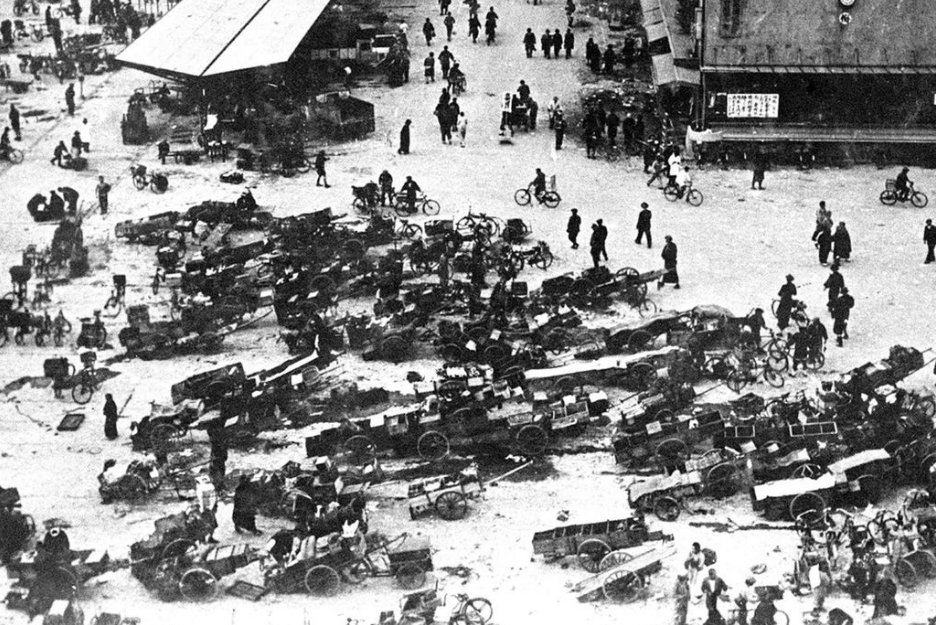
The history of the Tsukiji area can be traced back to 1657, when the government reclaimed land along Tokyo Bay and named it “Tsukiji” — literally translated as “constructed land.” In 1923 the Great Kanto Earthquake destroyed much of central Tokyo, along with the the Nihonbashi fish market. In 1935 the market was relocated to its current site near Ginza, where it transformed the Tsukiji area into a bustling town.
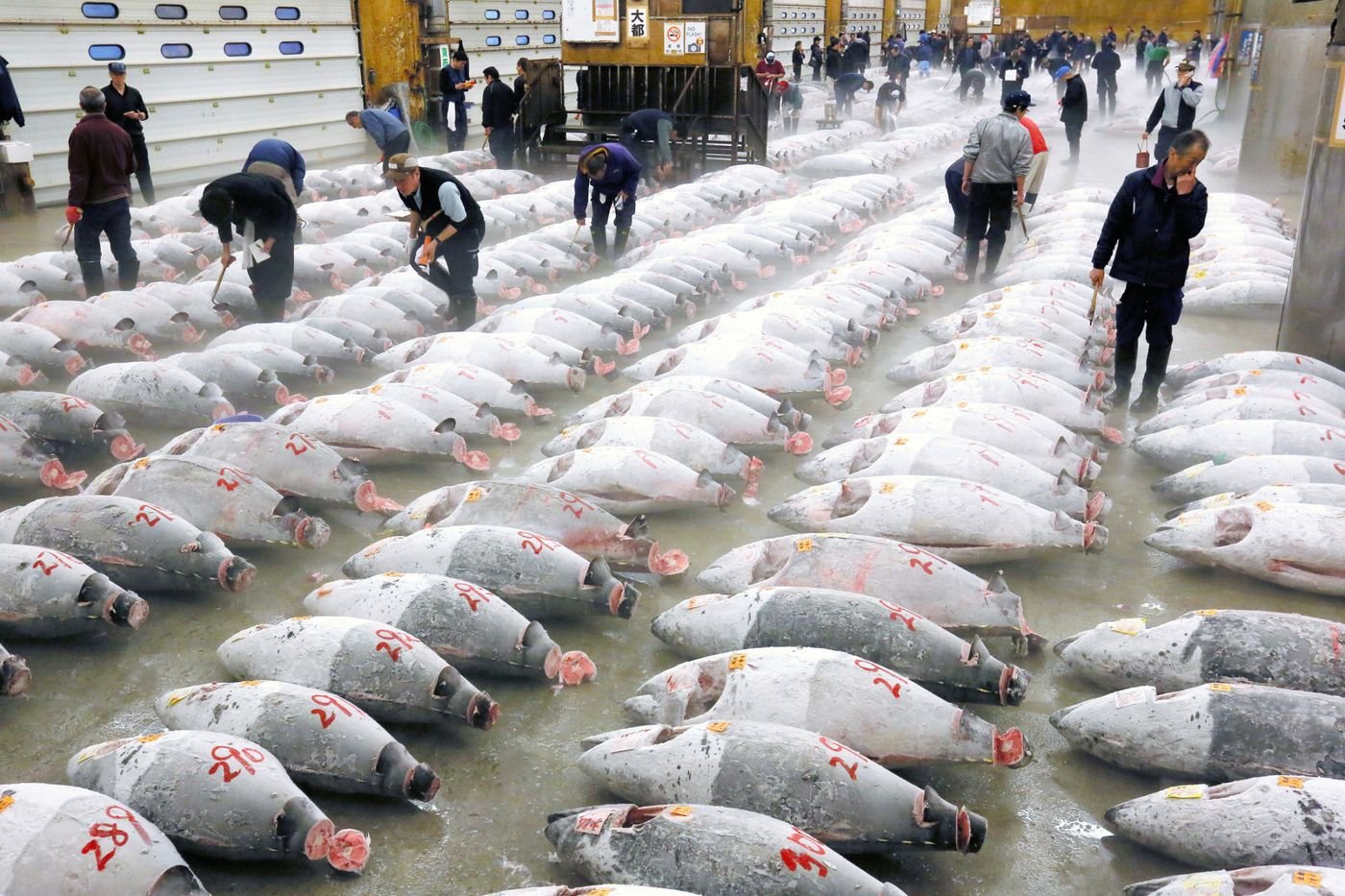
Traders examine frozen tuna ahead of an auction at Tsukiji fish market.
Photographer: The Asahi Shimbun via Getty Images
The market is one of the top tourist destinations in Tokyo, attracting as many as 42,000 visitors a day.

Buyers gather for the final auction on the closing day of the market on Oct. 6.
Photographer: Tomohiro Ohsumi/Bloomberg
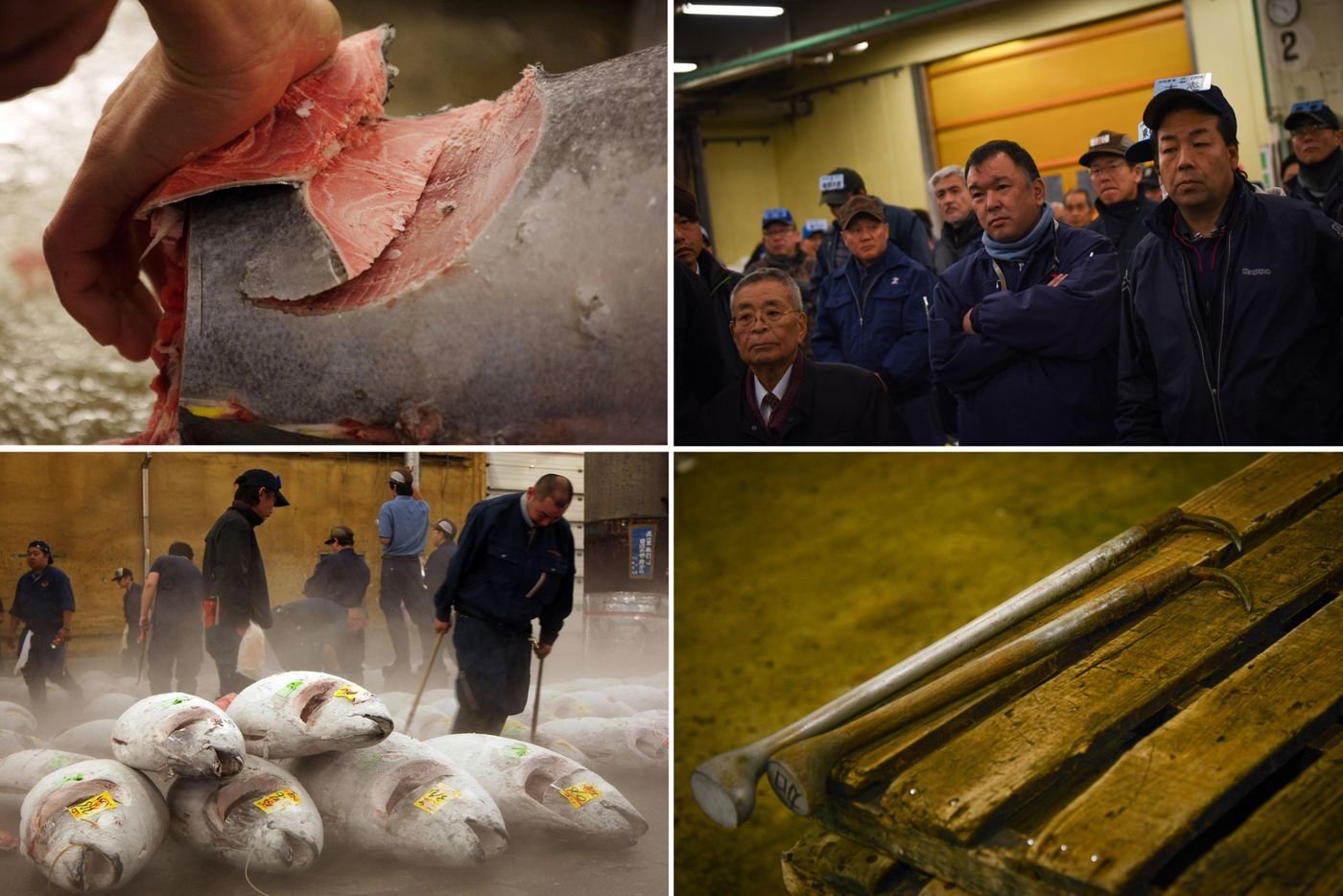
From top left, clockwise: a buyer inspects a tuna; buyers gather for auction; tools used to aid inspection of the fish; frozen tuna being examined.
Photographers: Noriyuki Aida/Bloomberg, Koichi Kamoshida/Getty Images
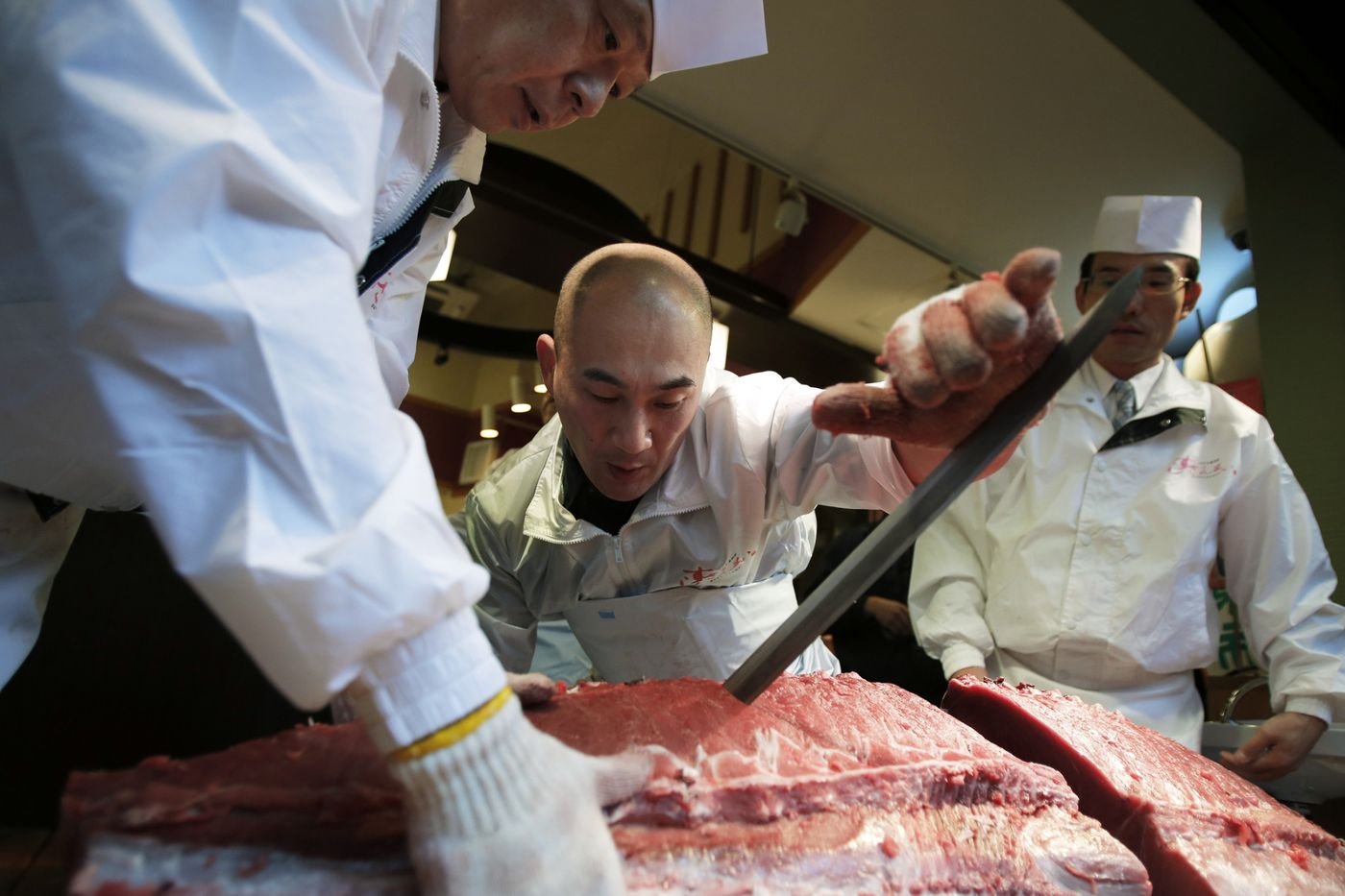
Workers cut a fresh whole tuna at the first auction of 2014, at a Sushi Zanmai restaurant.
Photographer: Kiyoshi Ota/Bloomberg
Each year the symbolic New Year auction often attracts media attention, as buyers battle to outbid each other. Bidders use hand signals to dictate their price, with the fish usually selling within seconds.
Kiyomura Corp., whose owner Kiyoshi Kimura runs the Sushi Zanmai restaurant chain, has frequently been the highest bidder. The most expensive tuna sold at the market went to Kiyomura in 2013 for 155.4 million yen ($1.36 million).
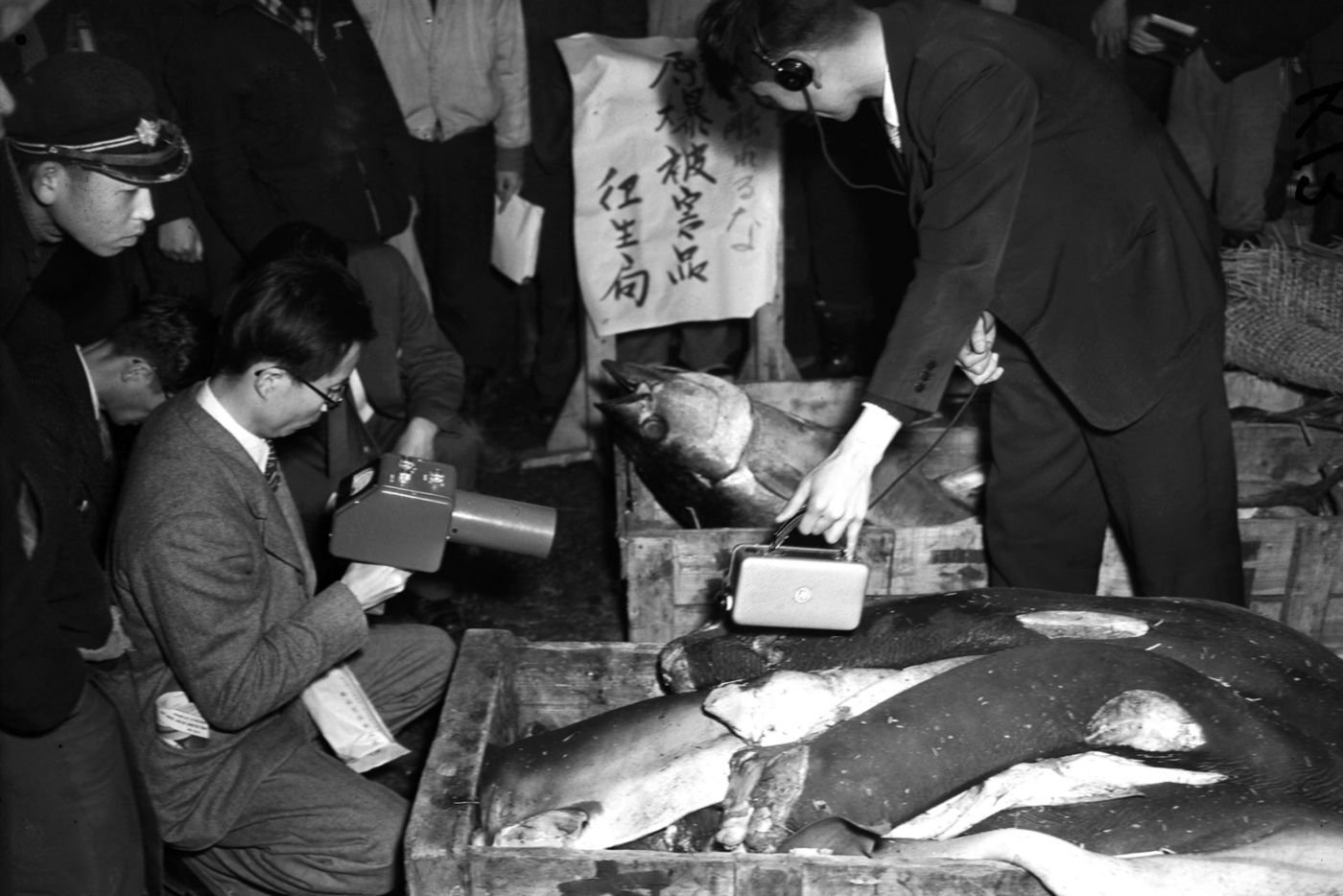
Source: The Asahi Shimbun/Getty Images
Fish are checked for radiation levels at Tsukiji fish market in 1954, the year of the American “Castle Bravo” hydrogen bomb test near Bikini Atoll. The fishing boat Lucky Dragon No. 5 — along with its cargo and 23 crew members — suffered radiation exposure from the blast. The poisoning of the haul, dubbed the “A-bomb tuna,” drove down prices of other fish in the market, prompting Tokyo’s government to stamp approval on fish that passed radiation tests, according to a Mainichi newspaper report.

Photographers: Yoshikazu Tsuno/AFP via Getty Images, Tomohiro Ohsumi/Getty Images, Tomohiro Ohsumi/Bloomberg
Workers drive mini-forklifts outside Tsukiji. Employees zipping around on these little vehicles, known as “turret trucks,” are a familiar market sight.

Photographer: The Yomiuri Shimbun via AP Photo
In August 2017, a fire broke out at Tsukiji, burning for 15 hours before it was extinguished, according to media reports. Safety concerns were cited as a key reason to push through the move to a new location.
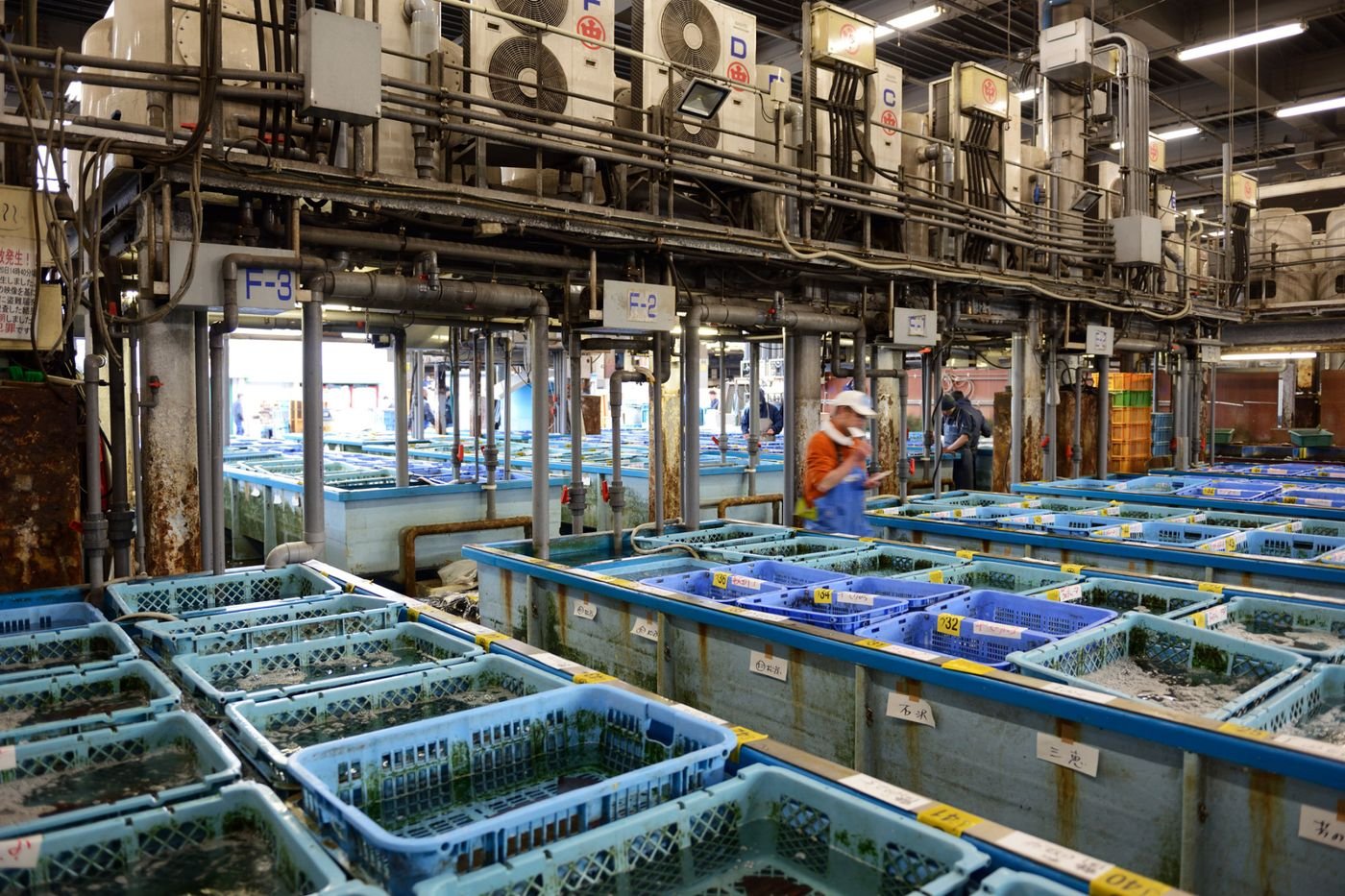
Photographer: Frédéric Soltan/Corbis via Getty Images
Moving the market has proved no easy task. Tokyo Metropolitan Government first decided on the relocation to Tokyo Bay in 2001, but concerns over tainted soil at the new site and the cost of the move led to more than a decade and a half of delays.

Photographer: Daniel Berehulak/Getty Images
In recent years, Tsukiji has featured in movies such as “Jiro Dreams of Sushi,” the 2011 documentary about Jiro Ono, one of Tokyo’s most notable sushi chefs.

Photographer: Daniel Berehulak /Getty Images
According to the Tokyo Metropolitan Government website, the cost of moving the market is estimated to be about 392.6 billion yen ($3.45 billion). Governor Yuriko Koike has faced criticism over the price tag.
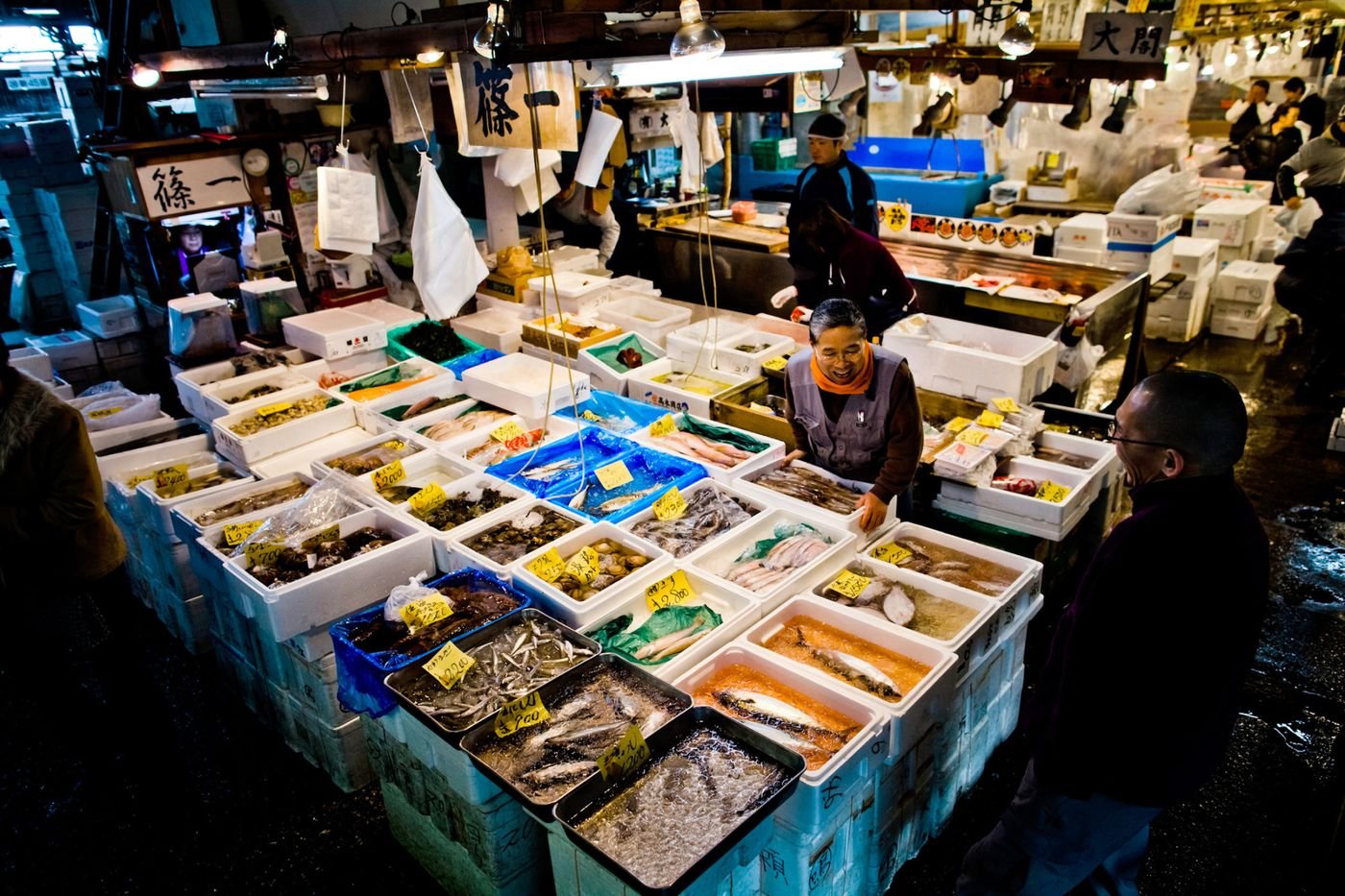
Photographer: Daniel Berehulak/Getty Images
Not everyone is happy about the move to Toyosu. While some shop owners have decided to relocate to the new site, others have chosen to close down.

Photographer: Noriko Hayashi/Bloomberg
People walk near a Sushi Zanmai restaurant in Tokyo, Japan, in January 2017.
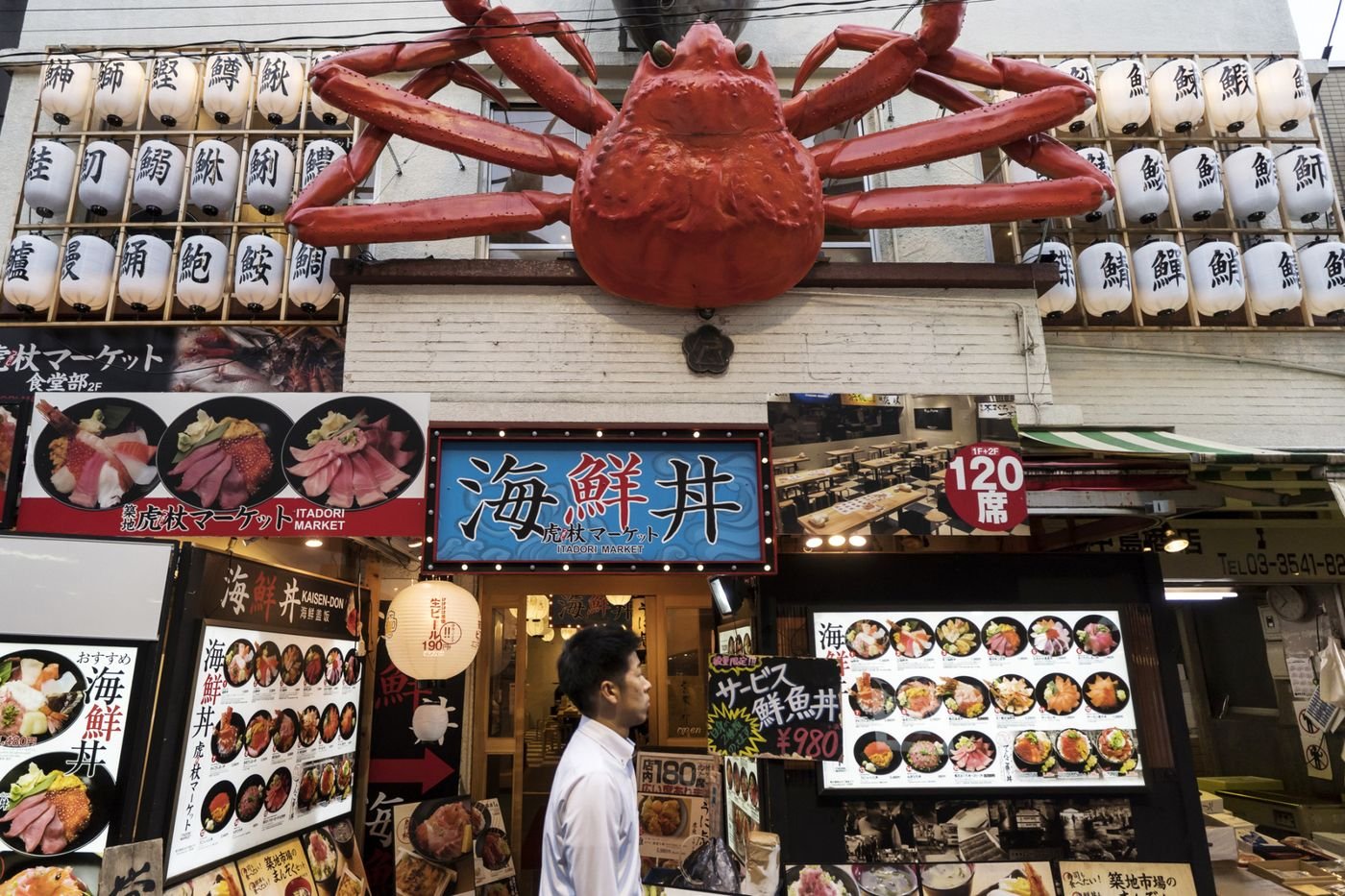
Photographer: Tomohiro Ohsumi/Bloomberg
Tsukiji isn't just a place to buy fish. The outer market shops and vendors sell everything from dried foods to kitchenware. Visitors wander in search of soba and ramen noodle restaurants, and can satisfy a sweet tooth with Japanese confectionery.

Photographer: Tomohiro Ohsumi/Bloomberg
Above, performers stand in the fish wholesale area of the new Toyosu facility during an official opening ceremony on September 13, 2018. Below, a worker takes a short break to eat some food inside Tsukiji fish market. While the wholesale market will move to Toyosu, the busy outer shopping area will remain in its current location. The rest of the site will be redeveloped into a transport hub in time for the 2020 Tokyo Olympics.
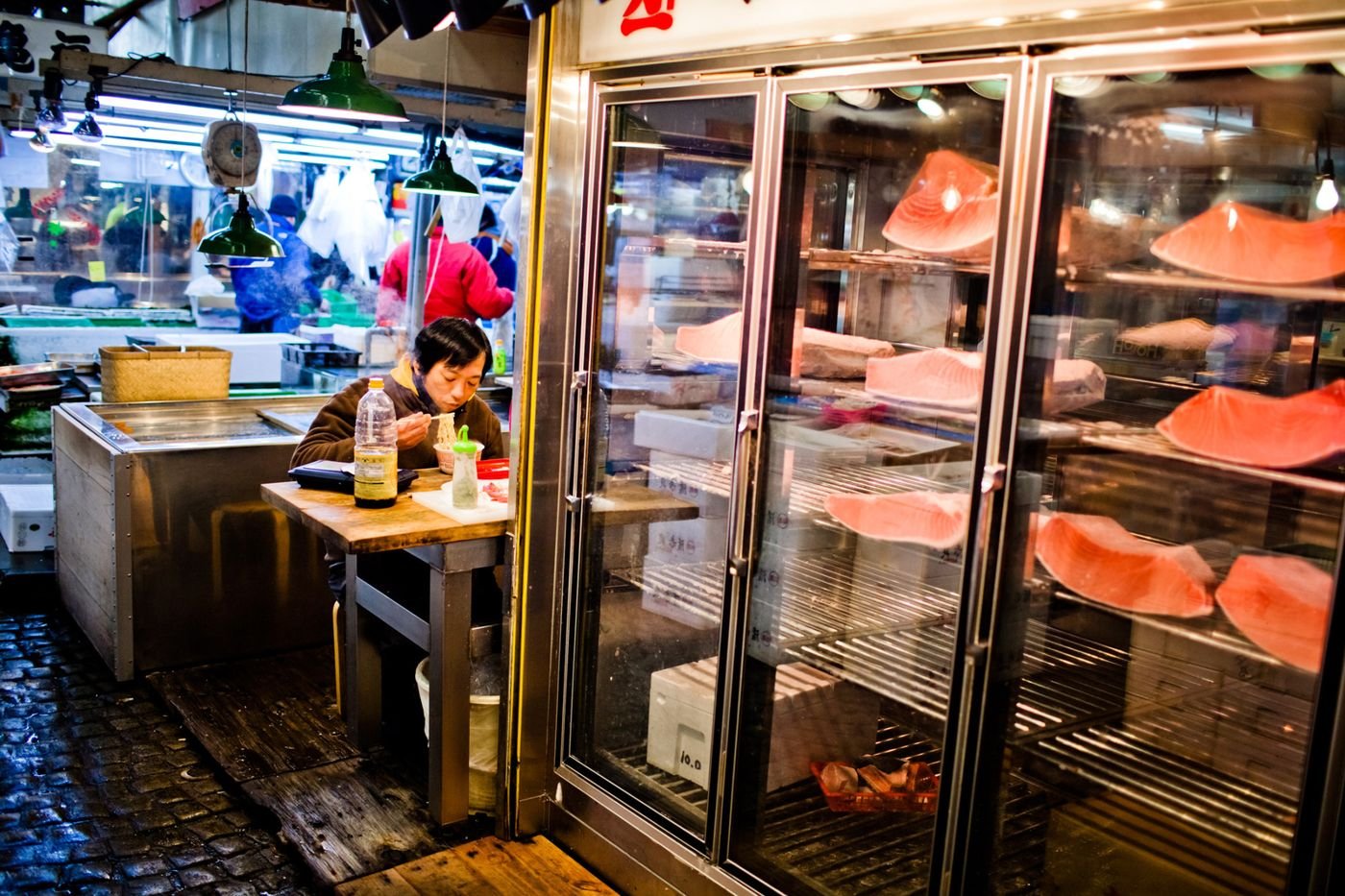
Photographer: Daniel Berehulak/Getty Images
|
|
|
|


















